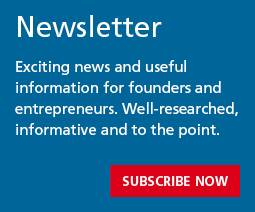Burnout and emotional exhaustion contribute to a growing number of sick leaves in Switzerland. Some companies are taking measures, following recommendations from Health Promotion Switzerland, to improve the well-being of their employees.

Nearly a quarter of companies are grappling with a notable surge in absences due to stress or burnout, as revealed by a survey published by insurer Axa. This trend results in an elevated workload for the remaining workforce, triggers recruitment costs for replacements, leads to productivity losses, and a decline in service levels.
Over the past decade, the best practices of Corporate Health Management (CHM) have been shared primarily through case studies and specialized training. In the context of a Confederation mandate, Health Promotion Switzerland assists executives and HR managers in implementing measures to ensure a healthy work environment. Since 2009, the foundation has also been granting the "Friendly Workspace" label, affirming the quality of working conditions and the well-being of employees.
A complex and systematic follow-up
According to Gérard Bottazzoli, project manager for CHM at Health Promotion Switzerland, "only about a hundred companies are currently certified as 'Friendly Workspace.' However, nearly three-quarters of Swiss companies have committed to reducing their employees' stress." So, why then are workplace absences increasing in Switzerland?
"Sometimes there are conflicting interests that are challenging to manage between the obligation for profitability and the desire to provide a supportive environment for employees," explains Urs Jörg, a psychology lecturer at the Zurich University of Applied Sciences and author of the book "Handbuch Angewandte Psychologie für Führungskräfte" (Handbook of Applied Psychology for Managers). Companies are sometimes required to change their business strategy rapidly, creating an uncertain or even anxiety-inducing work environment. Additionally, managers are often not trained to address mental health issues and conflict management.
Based in Ardon (VS) and La Tzoumaz (VS), the Domus Foundation, specializing in psychosocial rehabilitation, has implemented the analysis and support services of Health Promotion Switzerland since 2019. "The initial assessments have shown that the implementation of our health measures was not systematic," explains Stéphanie Emery Haenni, head of human resources.
Employee autonomy and management oversight
Faced with this observation, the foundation chose to establish a committee specifically dedicated to CHM and then develop projects targeting specific aspects of work to closely monitor their implementation.
The institution, with 130 employees, underwent a reorganization of its work structure by adopting participative management. In this system, "each employee becomes an entrepreneur of their own responsibilities," emphasizes Stéphanie Emery Haenni. Although this restructuring led nearly one in five employees to resign, it nevertheless proved beneficial in the medium term. "Sporadic absences were significantly reduced, with this system allowing for better management of the balance between professional and personal life. Our turnover rate is expected to be 5.85% in 2023, which is very low in our field."
For psychologist Urs Jörg, who also teaches leadership courses for managers, it is crucial for employees to ensure the smooth implementation of measures aimed at improving working conditions. "Managers have a certain degree of flexibility but ultimately also depend on employees to successfully carry out these operations."
Addressing constraints and resources
Developed by Health Promotion Switzerland, the "Job Stress Index" is an analysis tool that provides an inventory of constraints (time pressure, uncertainties, organizational issues, etc.) and resources (flexibility, recognition, etc.) specific to the analyzed workplace. "Constraints will always be part of the job, but they should not outweigh the resources," summarizes Gérard Bottazzoli.
The analyses of workplace stress levels conducted by Health Promotion Switzerland are presented in three categories: favorable, sensitive, and critical. The specialist notes a risk of worsening the situation if managers do not react. "When employees are in a 'sensitive' situation and no action is taken, they generally transition to a critical zone in the medium term. The opposite trend is observed when concrete and coordinated actions are taken."
Information
On the theme
Promoting well-being in the workplace through the PERMA model
Developed by American psychologist Martin Seligman, the PERMA model identifies five essential aspects to ensure employee fulfilment in the workplace: Positive emotions, Engagement, Relationships, Meaning, and Accomplishment. These aspects are measurable through online tools developed by the teams at the University of Pennsylvania.
Last modification 03.01.2024





